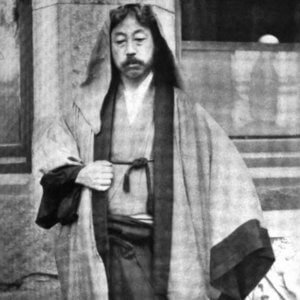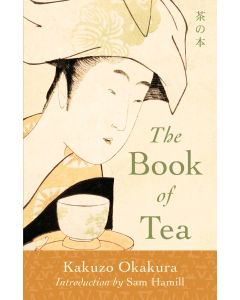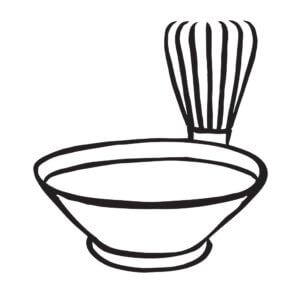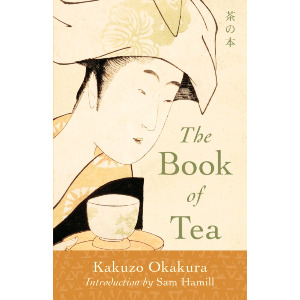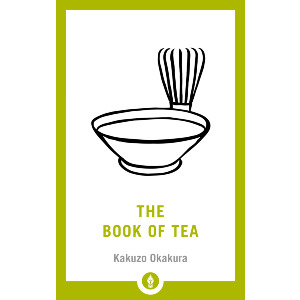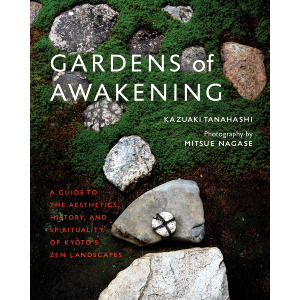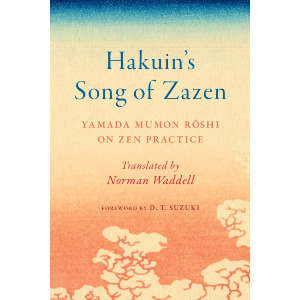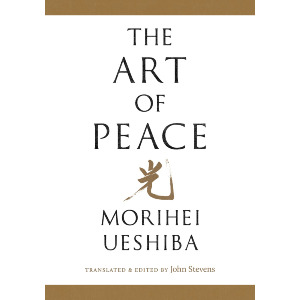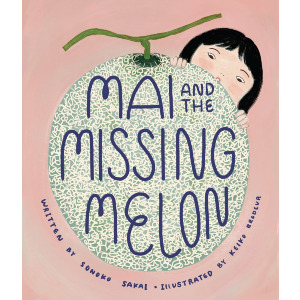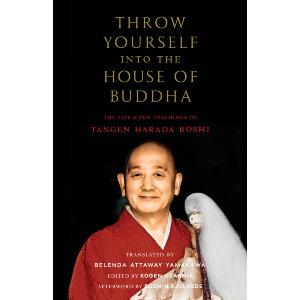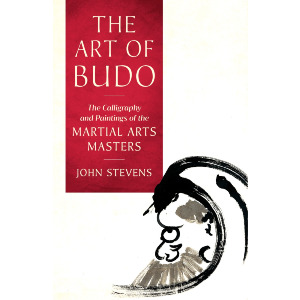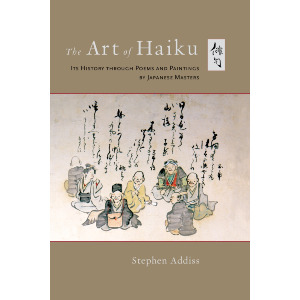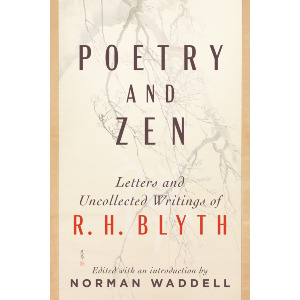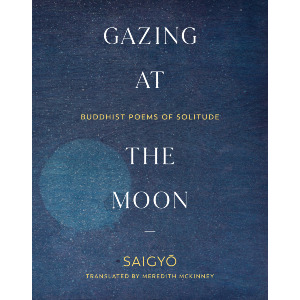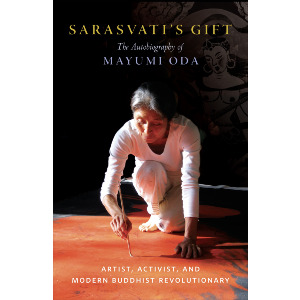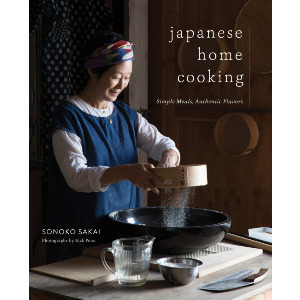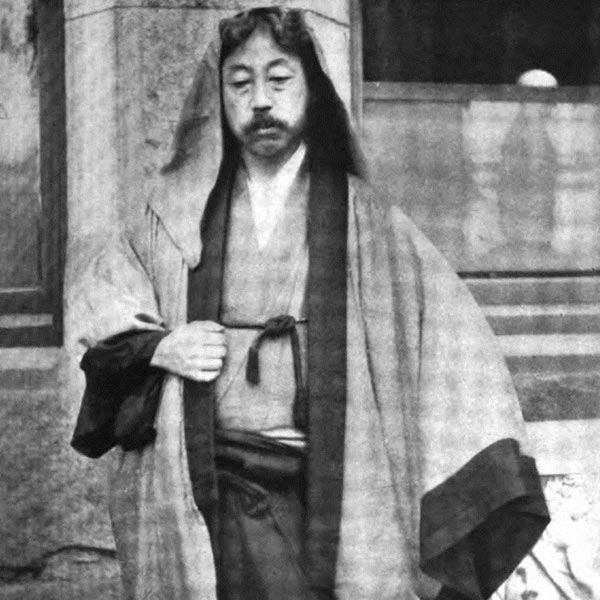

Kakuzo Okakura
Kakuzo Okakura (1863–1913)—renowned scholar, art critic, and curator of the Chinese and Japanese art collection at the Boston Museum of Fine Arts—devoted his life to the preservation and reawakening of traditional Japanese culture.
Kakuzo Okakura
GUIDES
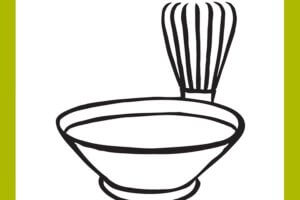
Tea Masters | An Excerpt from The Book of Tea
Related Books
Striving to Become Art Itself
In religion the future is behind us. In art the present is the eternal. The tea masters held that real appreciation of art is only possible to those who make of it a living influence. Thus they sought to regulate their daily life by the high standard of refinement obtained in the tearoom. In all circumstances serenity of mind should be maintained, and conversation should be so conducted as never to mar the harmony of the surroundings. The cut and color of the dress, the poise of the body, and the manner of walking could all be made expressions of artistic personality. These were matters not to be lightly ignored, for until one has made himself beautiful, he has no right to approach beauty. Thus the tea master strove to be something more than the artist—art itself. It was the Zen of aestheticism. Perfection is everywhere if we only choose to recognize it. Rikiu loved to quote an old poem that says, “To those who long only for flowers, fain would I show the full-blown spring that abides in the toiling buds of snow-covered hills.”
These were matters not to be lightly ignored, for until one has made himself beautiful, he has no right to approach beauty. Thus the tea master strove to be something more than the artist—art itself.
Manifold indeed have been the contributions of the tea masters to art. They completely revolutionized the classical architecture and interior decorations and established the new style that we have described in the chapter of the tearoom, a style to whose influence even the palaces and monasteries built after the sixteenth century have all been subject. The many-sided Kobori-Enshiu has left notable examples of his genius in the imperial villa of Katsura, the castles of Najoya and Nijo, and the monastery of Kohoan. All the celebrated gardens of Japan were laid out by the tea masters. Our pottery would probably never have attained its high quality of excellence if the tea masters had not lent to it their inspiration, the manufacture of the utensils used in the tea ceremony calling forth the utmost expenditure of ingenuity on the part of our ceramists. The Seven Kilns of Enshiu are well known to all students of Japanese pottery. Many of our textile fabrics bear the names of tea masters who conceived their color or design. It is impossible, indeed, to find any department of art in which the tea masters have not left marks of their genius. In painting and lacquer it seems almost superfluous to mention the immense service they have rendered. One of the greatest schools of painting owes its origin to the tea master Honnami-Koyetsu, famed also as a lacquer artist and potter. Beside his works, the splendid creation of his grandson, Koho, and of his grand-nephews, Korin and Kenzan, almost fall into the shade. The whole Korin school, as it is generally designated, is an expression of teaism. In the broad lines of this school we seem to find the vitality of nature herself.
Influence Over Our Daily Lives
Great as has been the influence of the tea masters in the field of art, it is as nothing compared to that which they have exerted on the conduct of life. Not only in the usages of polite society, but also in the arrangement of all our domestic details, do we feel the presence of the tea masters. Many of our delicate dishes, as well as our way of serving food, are their inventions. They have taught us to dress only in garments of sober colors. They have instructed us in the proper spirit in which to approach flowers. They have given emphasis to our natural love of simplicity and shown us the beauty of humility. In fact, through their teachings tea has entered the life of the people.
In fact, through their teachings tea has entered the life of the people.
Those of us who know not the secret of properly regulating our own existence on this tumultuous sea of foolish troubles that we call life are constantly in a state of misery while vainly trying to appear happy and contented. We stagger in the attempt to keep our moral equilibrium and see forerunners of the tempest in every cloud that floats on the horizon. Yet there is joy and beauty in the roll of the billows as they sweep outward toward eternity. Why not enter into their spirit, or, like Lieh-tzu, ride upon the hurricane itself?
He only who has lived with the beautiful can die beautifully. The last moments of the great tea masters were as full of exquisite refinement as had been their lives. Seeking always to be in harmony with the great rhythm of the universe, they were ever prepared to enter the unknown. The “Last Tea of Rikiu” will stand forth forever as the acme of tragic grandeur.
He only who has lived with the beautiful can die beautifully.
Rikiu and the Taiko Hideyoshi
Long had been the friendship between Rikiu and the Taiko Hideyoshi and high the estimation in which the great warrior held the tea master. But the friendship of a despot is ever a dangerous honor. It was an age rife with treachery, and men trusted not even their nearest kin. Rikiu was no servile courtier and had often dared to differ in argument with his fierce patron. Taking advantage of the coldness that had for some time existed between the Taiko and Rikiu, the enemies of the latter accused him of being implicated in a conspiracy to poison the despot. It was whispered to Hideyoshi that the fatal potion was to be administered to him with a cup of the green beverage prepared by the tea master. With Hideyoshi suspicion was sufficient ground for instant execution, and there was no appeal from the will of the angry ruler. One privilege alone was granted to the condemned—the honor of dying by his own hand.
On the day destined for his self-immolation, Rikiu invited his chief disciples to a last tea ceremony. Mournfully at the appointed time the guests met at the portico. As they look into the garden path the trees seem to shudder, and in the rustling of their leaves are heard the whispers of homeless ghosts. Like solemn sentinels before the gates of Hades stand the gray stone lanterns. A wave of rare incense is wafted from the tearoom; it is the summons that bids the guests to enter. One by one they advance and take their places. In the tokonoma hangs a kakemono, a wonderful writing by an ancient monk dealing with the evanescence of all earthly things. The singing kettle, as it boils over the brazier, sounds like some cicada pouring forth his woes to departing summer. Soon the host enters the room. Each in turn is served with tea, and each in turn silently drains his cup, the host last of all. According to established etiquette, the chief guest now asks permission to examine the tea equipage. Rikiu places the various articles before them, with the kakemono. After all have expressed admiration of their beauty, Rikiu presents one of them to each of the assembled company as a souvenir. The bowl alone he keeps. “Never again shall this cup, polluted by the lips of misfortune, be used by man.” He speaks and breaks the vessel into fragments.
The ceremony is over; the guests with difficulty restraining their tears, take their last farewell and leave the room. One only, the nearest and dearest, is requested to remain and witness the end. Rikiu then removes his tea gown and carefully folds it upon the mat, thereby disclosing the immaculate white death robe it had hitherto concealed. Tenderly he gazes on the shining blade of the fatal dagger and in exquisite verse thus addresses it:
Welcome to thee,
O sword of eternity!
Through Buddha
And through Dharuma alike
Thou hast cleft thy way.
With a smile upon his face Rikiu passed forth into the unknown.
